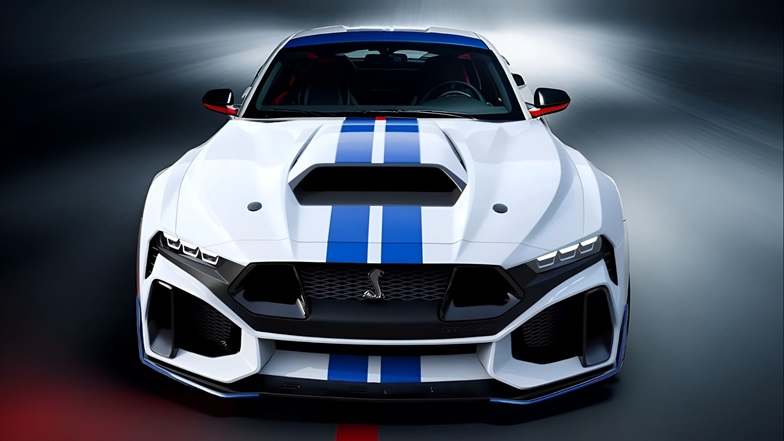Mercedes-Benz has unveiled a groundbreaking innovation in braking technology that could redefine the way electric vehicles (EVs) operate. Their new in-drive brake system promises a lifetime solution for EV braking, offering multiple advantages over traditional setups. By embedding the brake system within the drive unit, Mercedes not only enhances performance but also addresses environmental concerns. Let’s dive deeper into this exciting development and its implications for the EV market.

What Are In-Drive Brake System?
Unlike conventional outboard brakes, which are mounted on wheel hubs, or even inboard brakes located closer to the vehicle’s center, Mercedes’ in-drive brake System are housed within the EV’s drive unit itself. This innovative design reimagines braking for modern electric vehicles.
Here’s how the system works:
- Stationary Water-Cooled Disk: Unlike traditional spinning brake disks, Mercedes uses a stationary disk that is water-cooled to prevent overheating.
- Circular Spinning Brake Pad: The brake pad spins alongside the motor and applies pressure to the stationary disk to slow the vehicle.
- No Calipers: The system eliminates the need for traditional calipers, which is a significant departure from conventional braking systems.
This design ensures the braking mechanism is maintenance-free for the vehicle’s lifetime, capturing all brake dust within a sealed compartment and preventing particulate emissions from escaping into the environment.
Why In-Drive Brakes Matter for EVs
Electric vehicles already rely heavily on regenerative braking, which uses the electric motor to slow the car while recapturing energy to recharge the battery. This means traditional friction brakes see far less use in EVs compared to internal combustion engine (ICE) vehicles.
Mercedes’ in-drive brakes take this concept a step further by offering several advantages:
- Virtually Maintenance-Free: The sealed system captures all brake dust and requires no servicing, saving time and money for EV owners.
- Environmental Benefits: With the upcoming Euro 7 emissions standard (effective 2026) regulating both tailpipe and particulate emissions, this system aligns perfectly with stricter environmental regulations.
- Enhanced Performance: The water-cooled disk prevents brake fade under heavy use, ensuring consistent braking performance even in demanding conditions.

Key Advantages of In-Drive Brakes
1. Reduced Brake Dust Emissions
Brake dust is a significant source of particulate pollution, and the Euro 7 standards aim to limit these emissions. By trapping brake dust within a sealed compartment, Mercedes’ system prevents harmful particles from entering the atmosphere, offering a cleaner and greener alternative.
2. Improved Vehicle Handling
Placing the braking system inside the drive unit reduces unsprung weight, which is the mass not supported by the vehicle’s suspension. This reduction improves handling, making the car more agile and responsive.
3. Better Aerodynamics
Traditional brake systems often necessitate open wheel designs for cooling purposes. With in-drive brakes, vehicles can feature fully covered aerodynamic wheels, reducing drag and improving efficiency. This change could lead to sleeker, more futuristic vehicle designs.
4. Elimination of Brake Noise
The in-drive brake system operates more quietly than traditional setups. Additionally, EV owners won’t have to deal with unsightly rust-covered brake disks after leaving their vehicles parked for a few days—a common issue in humid environments.
5. Enhanced Design Flexibility
By removing the caliper from the wheel, designers have more freedom to create unique and stylish wheel designs. While this may not resonate with all car enthusiasts, it opens new possibilities for aesthetic innovation.

How Does It Compare to Existing Brake Technologies?
Drum Brakes (Volkswagen’s Approach)
Volkswagen equips many of its EVs, like the ID.4 and Audi Q4 E-Tron, with rear drum brakes. These are cost-effective and sufficient for rear braking since most braking force is applied to the front wheels.
- Advantages: Affordable and durable.
- Drawbacks: Limited braking power and outdated technology.
Traditional Disk Brakes
Most vehicles still rely on traditional disk brakes, known for their stopping power and reliability. However, they require regular maintenance and can produce significant brake dust emissions.
- Advantages: High braking performance and well-established technology.
- Drawbacks: Maintenance-intensive and less environmentally friendly.
Mercedes’ In-Drive Brakes
This system stands out as a complete rethinking of braking technology, offering a lifetime solution with added environmental and performance benefits.
| Feature | Drum Brakes | Disk Brakes | Mercedes In-Drive Brakes |
|---|---|---|---|
| Cost | Low | Moderate | High (likely higher initial cost) |
| Maintenance | Minimal | Regular | None |
| Performance | Adequate for rear only | High | High |
| Environmental Impact | Moderate | High brake dust | Virtually zero brake dust |
| Design Flexibility | Limited | Moderate | High |
Challenges and Future Considerations
While the advantages of in-drive brakes are clear, there are potential hurdles:
- Higher Initial Costs: Advanced technology often comes at a premium, potentially increasing vehicle prices.
- Consumer Trust: Convincing traditionalists and car enthusiasts to embrace such a radical departure from familiar systems could take time.
- Testing and Scaling: As this innovation is still in its early stages, widespread adoption depends on further testing and refinement.
A Glimpse into the Future
During the demonstration in Stuttgart, Mercedes hinted at the transformative potential of in-drive brakes. Beyond the environmental and performance benefits, the technology aligns with broader trends in the automotive industry:
- Increased Modularization: Incorporating braking into the drive unit allows for more modular vehicle designs, potentially simplifying manufacturing processes.
- Integration with Autonomous Systems: Advanced braking systems like this could seamlessly integrate with autonomous driving features, ensuring precise and reliable control.
A Leap Forward for EVs
Mercedes’ in-drive brake system represents a bold leap forward in EV technology, addressing critical concerns like maintenance, environmental impact, and design limitations. With its virtually maintenance-free design, enhanced performance, and alignment with upcoming Euro 7 standards, this innovation positions Mercedes as a leader in sustainable automotive technology.
While challenges remain, the potential benefits make this development one to watch closely. If successful, in-drive brakes could become a standard feature in next-generation electric vehicles, further advancing the transition to cleaner, more efficient transportation.
PEOPLE WHO READ THIS, ALSO READ




